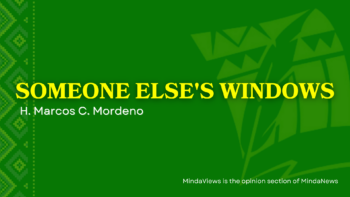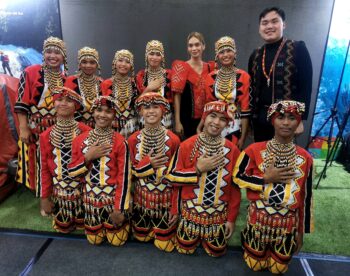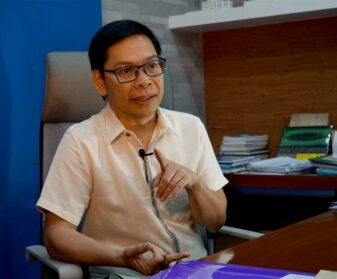Constitutonal change options
CAGAYAN DE ORO CITY (MindaNews/14 July) – Now that President Duterte has clearly expressed his preference for a constitutional convention (ConCon) as a mode of changing the Constitution, and incoming speaker Pantaleon Alvarez has filed a resolution calling for election of ConCon delegates, it would be good to weigh the pros and cons of this mode vis-à-vis the other two modes, namely: the constituent assembly and people’s initiative. This is the subject of this second article in a series on charter change.
Under the 1987 Constitution, a constitutional convention may be called by Congress by: 1) a vote of two-thirds of all its members; or, 2) a resolution, by a majority vote of all its members, to submit to the electorate the question of calling such a convention. Once assembled a constitutional convention, like Congress, possesses in all its plenitude the constituent powers. Its powers cannot be limited or restricted by the legislature. With this power, the Constitution is opened up for examination and amendment in its entirety. This mode was used to draft the Malolos Constitution of 1899, the 1935 and 1973 Constitutions. ConCon members are elected for the sole purpose of amending or revising the Constitution. If chosen well, they are likely to be competent, independent minded, non-partisan and visionary. Sectors that do not have representation in Congress may be given opportunity to sit in the ConCon and to participate in the drafting of the new charter. This mode is less controversial and politicized. Conversely however, a ConCon is an expensive process relative to the others. It is more difficult to manage and the least divisive modality.
In a constituent assembly the House of Representatives and the Senate constitute themselves to perform a non-legislative or super-legislative function that inherently belongs to the people, the repository of the sovereignty in a Republican State. A constituent assembly is called through resolution or bill passed by a member of the Congress constituting Congress as such. Once both houses adopt the resolution or pass the bill, they become a constituent assembly that can start crafting the amendment to or revision of the Constitution. The proposals will then be subject to a vote by its members and are deemed approved upon a vote of three-fourths of all its members. A plebiscite will then be held within the prescribed period.
Constitutional amendments via constituent assembly had happened under the 1935 Constitution during the presidencies of Manuel L. Quezon and Manuel Roxas. It is the most expedient and less expensive mode. The Joint Resolution that will create the constituent assembly can prescribe the limits of the agenda of amendments; hence, it is easier to manage. The members of the constituent assembly are elective officials whose constituents can hold them accountable especially in the next elections. Conversely, if the two houses voted jointly, the assembly might be dominated by members of Congress who have narrow or parochial interests. Moreover considering its membership, it is fraught with conflict-of-interest issues because the congressmen or senators may be tempted to propose changes to the Constitution which would benefit their political careers, like redistricting or lifting of term limits.
The last but not the least mode is via people’s initiative. Under this modality, the people directly propose amendments to the Constitution upon a petition of at least twelve per centum of the total number of registered voters, of which every legislative district must be represented by at least three percent of the registered voters therein. Any amendment becomes valid when ratified by a majority of the votes cast in a plebiscite. The use of this mode however is limited to amendments to the Constitution. It cannot be utilized to revise the charter. Thus, a people’s initiative cannot be used to propose, for example, a shift to a federal form of government inasmuch as this shift is not a simple amendment. The people’s initiative however is too unrealistic and too cumbersome for ordinary citizens and their organizations. It is sheer wishful thinking to expect ordinary citizens and non-government organizations to gather millions of signatures that contain those of at least 3 percent of voters in each and every legislative district nationwide, beside the requirement of 12 percent, in order for a petition to be considered sufficient for submission to the electorate in a plebiscite. The difficulty of this process became evident in the Sigaw ng Bayan petition which was eventually rejected by the Supreme Court on that ground that its people’s initiative failed to comply with the basic requirements of the Constitution.
Of the three modes, the constituent assembly will likely encounter a high level of distrust from the citizenry. Its financial cost, however, is lesser than that of the constitutional convention. The people’s initiative is cumbersome and financially costly for citizens’ organizations and given the existing legal regime, quite unreliable. A constitutional convention, notwithstanding its high financial cost, is generally more acceptable to ordinary citizens and more conducive for a circumspect constitutional drafting process. More than anything else, constitutional change, in whatever mode, ought to be an offshoot of the citizenry’s demand for and participation in good governance. For this reason, I support President Duterte’s preference to use the constitutional convention mode for writing a new constitution that will replace the 1987 Constitution.
(MindaViews is the opinion section of MindaNews. Antonio “Tony” La Viña is a human rights and environmental lawyer from Cagayan de Oro City. He was a member of the Government of the Philippines Peace Panel that negotiated with the MILF from January-June 2010. He teaches Constitutional Law at the Xavier University in Cagayan de Oro City and at the Ateneo School of Government at the Ateneo de Manila University where he used to be Dean. He can be reached at Tonylavs@gmail.com. Follow him on Facebook: tlavina@yahoo.com and on Twitter: tonylavs.)







